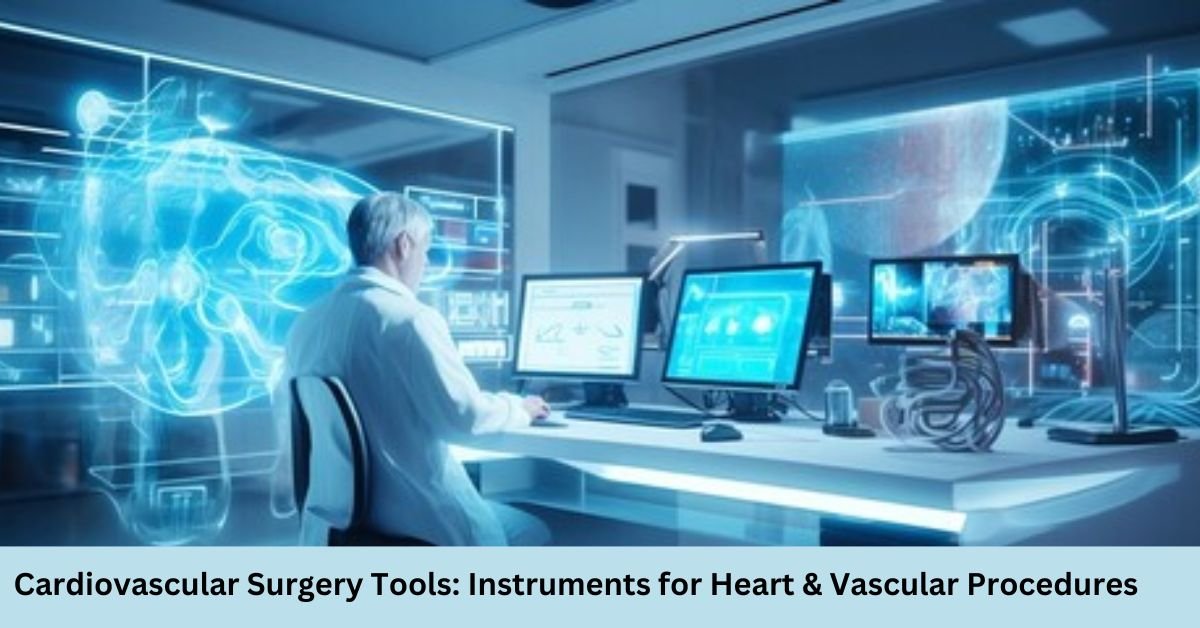Cardiovascular Surgery Tools:
Medical tools for surgery encompass a vast array of instruments and equipment crucial for performing precise and effective surgical procedures across various medical specialties. These tools are meticulously designed, often evolving with advancements in technology and surgical techniques, to ensure optimal patient outcomes and safety.
General Surgical Instruments:
The foundation of surgical tools includes basic instruments like scalpels, forceps, scissors, and retractors. Scalpels are used for making incisions, with different blade sizes and shapes available depending on the procedure and tissue type. Forceps assist in grasping and manipulating tissues, while scissors are employed for cutting and dissecting delicate structures. Retractors are pivotal in creating and maintaining access to surgical sites by holding tissues aside without damaging them, crucial for achieving optimal visibility during procedures.
Specialized Surgical Instruments:
In addition to general tools, each surgical specialty requires specialized instruments tailored to the specific anatomy and procedures involved:
- Orthopedic Instruments: Orthopedic surgery tools include bone saws, drills, and plates used for fracture fixation and joint replacement surgeries. These instruments are designed to handle dense bone tissue and facilitate precise placement of implants for stability and functionality.
- Neurosurgical Instruments: Neurosurgery demands precision instruments such as microscopes, stereotactic frames, and cranial drills. Microsurgical tools enable intricate procedures within the brain and spinal cord, while stereotactic frames aid in precise localization of targets for procedures like brain biopsies and deep brain stimulation.
- Cardiovascular Instruments: Cardiovascular surgery relies on specialized tools such as cardiac retractors, vascular clamps, and bypass grafting instruments. These instruments are essential for accessing and repairing the heart and blood vessels, ensuring optimal circulation and cardiac function.
- Gastrointestinal Instruments: Instruments for gastrointestinal surgery include endoscopes, laparoscopic tools, and staplers. Endoscopes enable visualization and intervention within the digestive tract, while laparoscopic instruments allow minimally invasive procedures like appendectomies and gallbladder removals with smaller incisions and faster recovery times.
- Urological Instruments: Urological surgery tools encompass cystoscopes, lithotripters, and ureteral stents. Cystoscopes facilitate visualization and treatment of the bladder and urethra, while lithotripters break down kidney stones non-invasively. Ureteral stents are used to relieve obstruction and promote drainage in the urinary tract.
- ENT Instruments: Ent Surgery Instruments include otoscopes, nasal speculum, and micro-instruments for delicate procedures within the ear and throat. Otoscopes aid in examining the ear canal and tympanic membrane, while nasal specula facilitate nasal examinations and interventions like sinus surgeries and septoplasty.
Advancements in Surgical Technology:
Recent decades have seen significant advancements in surgical technology, enhancing the precision, safety, and outcomes of procedures:
- Minimally Invasive Surgery (MIS): Techniques like laparoscopy and robotic-assisted surgery minimize incisions and tissue trauma, leading to reduced postoperative pain, shorter hospital stays, and faster recovery for patients. Robotic surgical systems offer enhanced dexterity and precision, allowing surgeons to perform complex procedures with greater control and accuracy.
- Image-Guided Surgery: Integration of imaging technologies such as CT scans, MRI, and intraoperative ultrasound enables real-time visualization of internal structures during surgery. This guidance improves accuracy in tumor resections, organ preservation, and minimally invasive interventions.
- Electrosurgical Instruments: Electrosurgical devices like electrocautery units and radiosurgery systems use electrical energy to cut, coagulate, and seal tissues during surgery. These instruments help minimize blood loss and improve surgical precision, particularly in procedures requiring hemostasis and tissue dissection.
- 3D Printing: Customized surgical instruments and implants can be created using 3D printing technology, tailored to patient-specific anatomies and surgical requirements. This innovation enhances surgical planning and outcomes, particularly in complex reconstructions and orthopedic surgeries.
Instrument Sterilization and Maintenance:
Ensuring the sterility and functionality of surgical instruments is critical to preventing infections and maintaining surgical efficacy. Instruments undergo rigorous cleaning, sterilization, and inspection processes according to established protocols before each use. Regular maintenance and calibration of equipment such as surgical microscopes and robotic systems are essential to uphold performance standards and ensure patient safety.
Conclusion:
In conclusion, medical tools for surgery encompass a diverse range of instruments and technologies essential for performing precise and effective surgical interventions across various medical specialties. From basic scalpels and forceps to advanced robotic systems and image-guided tools, these instruments continue to evolve, driven by innovations in technology and surgical techniques. By enhancing precision, minimizing invasiveness, and improving patient outcomes, these tools play a crucial role in advancing the field of surgery and delivering high-quality patient care worldwide.


